Click the MINI Cooper D for a high res gallery
For reasons such as imported oil dependency and environmental concerns, there are some people who think personal cars are evil and must be eliminated from our roads immediately. This sentiment is patently unrealistic, and there's no shortage of people, this writer included, who to enjoy cars while using less fuel and emitting fewer greenhouse gases. I'm not ashamed to say that driving quickly is fun and feels good, but that doesn't mean I like to waste fuel or dump pollutants into the air. That's why I love driving cars like the Tesla Roadster. Having fun driving doesn't necessarily mean you need to have an insanely fast car like the Tesla or an Audi R8. Small, lightweight cars like the Mazda MX-5 or or the Honda Fit don't have gobs of power, but they're fun to drive because they handle well and go around corners quickly.
The latest resident of the AutoblogGreen Garage is one of the most entertaining and fuel efficient cars I've driven in a long time. Unfortunately, it's also a car that Americans cannot buy. The 1.6L diesel-powered MINI Cooper D is not available in North America, but fuel system supplier Bosch has added one to its promotional fleet and recently loaned it to us. The aptly-named MINI is indeed a small car and the gas-engined versions offered in the US have been flying off lots at a record pace in recent months. Through the first six months of 2008, MINI sales in the U.S. are up 34 percent compared to last year. Follow the jump to see how the MINI Cooper D rates compared to the regular Cooper.
For reasons such as imported oil dependency and environmental concerns, there are some people who think personal cars are evil and must be eliminated from our roads immediately. This sentiment is patently unrealistic, and there's no shortage of people, this writer included, who to enjoy cars while using less fuel and emitting fewer greenhouse gases. I'm not ashamed to say that driving quickly is fun and feels good, but that doesn't mean I like to waste fuel or dump pollutants into the air. That's why I love driving cars like the Tesla Roadster. Having fun driving doesn't necessarily mean you need to have an insanely fast car like the Tesla or an Audi R8. Small, lightweight cars like the Mazda MX-5 or or the Honda Fit don't have gobs of power, but they're fun to drive because they handle well and go around corners quickly.
The latest resident of the AutoblogGreen Garage is one of the most entertaining and fuel efficient cars I've driven in a long time. Unfortunately, it's also a car that Americans cannot buy. The 1.6L diesel-powered MINI Cooper D is not available in North America, but fuel system supplier Bosch has added one to its promotional fleet and recently loaned it to us. The aptly-named MINI is indeed a small car and the gas-engined versions offered in the US have been flying off lots at a record pace in recent months. Through the first six months of 2008, MINI sales in the U.S. are up 34 percent compared to last year. Follow the jump to see how the MINI Cooper D rates compared to the regular Cooper.
All Photos Copyright ©2008 Sam Abuelsamid / Weblogs, Inc.
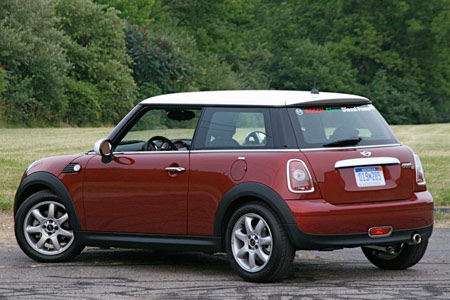
Before we begin, let's have a quick diesel primer. Burning a gallon of diesel will emit 15 percent more CO2 than a gallon of gasoline. However, compression ignition engines are 30 percent more efficient than the spark ignition variety. Adjusting that 30-percent reduction in volumetric fuel consumption for the 15 percent extra carbon yields a net CO2 reduction of about 25 percent. While it takes about the same amount of crude oil to produce a gallon of diesel or gasoline, refining the diesel takes less energy. Some of that advantage is negated by removing the sulfur to create ultra low sulfur diesel. Now that all that's out of the way, let's get back to the MINI D.
The video meant to be presented here is no longer available. Sorry for the inconvenience.
Visually, the only thing that separates the Cooper D from a gas-engined version is the script "D" tailgate badge. (Bosch also outfitted the tester with its own "Bosch Clean Diesel Power" stickers on the windshield and tailgate.) The modern MINI, now in its second generation, is clearly descended from Alec Issignosis' 1959 creation. Significantly larger car than the original, the 21st-century MINI is still relatively tiny by modern standards, especially in the U.S. market. The Cooper is 40 inches longer than a Smart ForTwo, but two-and-a-half feet shorter than a Prius. Pushing the wheels to the corners of the 145.6 inch body yields a 97.1 inch wheelbase.
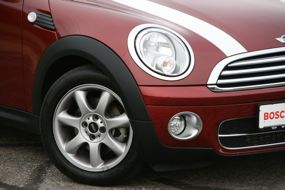
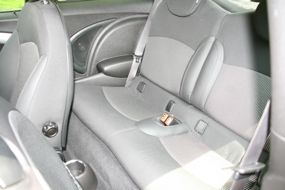
Those small dimensions mean that the front seat occupants have a reasonable amount of room, but unless the first two people in are very short, backseat passengers will find a dearth of legroom. Anyone looking to carry more than one passenger on a regular basis will want to opt for the 10-inch-longer Clubman. At any rate, the MINI is made for drivers who don't want to consume huge quantities of fuel. The cockpit is mostly great, but not perfect. Comfortable and supportive front seats don't offer much in terms of adjustability, but it's easy to find a good driving position with what they had to offer. The steering wheel is meaty and leather-wrapped. Behind it is a pod housing a tachometer and small information display. The center of the dashboard is dominated by a bold, enormous dial that's home to the speedometer, warning lights, and radio display/controls. Climate controls are below the slot for the CD player and at the bottom are a row of toggle switches for the windows, locks and reading lamps. Their non-standard location makes for less-than-intuitive controls, but they're in keeping with the car's interior style, and like anything else, you get used to them over time. The MINI is easy to see out of in all directions but one. The relatively vertical windshield is still well away from the driver. That means that the roof stretches forward, making it hard to see traffic lights if you're at the front of the line.
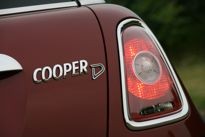
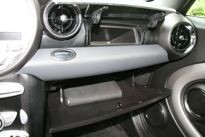
Americans can choose between gasoline-powered four-cylinders rated at either 118 hp/114 lb-ft (the normally-aspirated Cooper) or 172 hp/177 lb-ft (the turbocharged Cooper S). The Euro-market Cooper D's 1.6L diesel pairs the S model's 177 lb-ft torque rating with 108 horsepower. That's enough to get Cooper D to 60 mph in just under 10 seconds. The test car was also equipped with a 6-speed manual transmission. Once you get settled and insert the fob in the slot to the right of the steering column, a press of the start/stop button fires the little diesel to life. Its common rail injection system eliminates the traditional "diesel clatter," and, when combined with a particulate filter, contributes to smoke-free, odorless exhaust. Most drivers will never realize that this car has a diesel underhood due to the absence of those traditional characteristics.
Like other European-market four-cylinder cars produced by BMW (MINI's parent), the Cooper D has an auto start/stop system that shuts off the engine when the car comes to stop with the transmission in neutral. Like the GM mild hybrid system that restarts the engine when the brake pedal is released, the MINI fires back up as soon as you press the clutch pedal. The system works well as long as you don't engage the clutch, select first gear and release the clutch too quickly. If you rush, it's actually possible to release the clutch pedal before the engine restarts. A more typical relaxed launch works just fine. One benefit of the diesel's great low-end torque is a smoother launch than you sometimes get with small gas engines. The torque means you don't have to rev the engine as much and feather the clutch pedal to get away without stalling, a boon to those who, like my wife, are less experienced with three-pedal configurations.
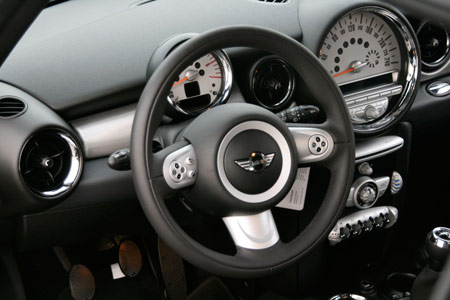
Once underway, the diesel's 5,000 rpm redline means that you don't get as wide a range as you would with a typical modern gasoline engine. However, the strong low end twisting force and flat torque curve mean you can be almost anywhere within the range and be able to accelerate with just a squeeze of the right pedal. While you can often get away without extra shifting, those that are accomplished at the activity will enjoy practicing their technique in the MINI. The throws are reasonably short and the shift gates are precise. The only negative is that selecting the reverse gear can be tricky. It sits to the left of 1st and forward in the pattern with no specific lockout other than increased resistance, meaning that it's not that hard to select reverse when seeking first, something I did more than once. In fact, the transmission's shift action is smoother than what I recently experienced in the much more expensive BMW M3.
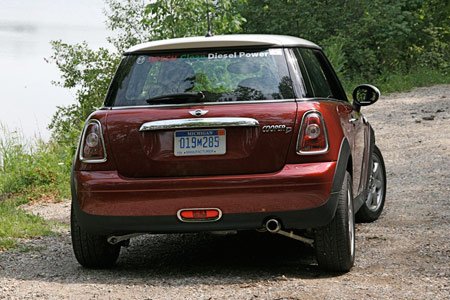
On a twisty road, the MINI had some of the best steering feedback I've ever felt in a front-wheel-drive car. The effort was perfect and the response was direct, with no dead spots on center. Turn the wheel and the car changes direction, but it never wanders on the highway. The ride is tight but not harsh with great wheel control. This is a fantastic car for running down a twisting road, its fat torque curve letting you squirt from corner to corner while never lacking for power.
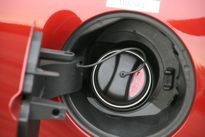
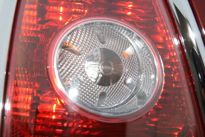
So, why is this little go-kart of a car being featured here on ABG? Even with all this cavorting, the MINI still managed to traverse 47 miles for every U.S.-sized gallon of diesel. Considering that most of the driving was around town without any hypermiling techniques, that's exceptional. A more sedate driving style could easily push 50 mpg. It's a lot better than any of the gas-engined Smarts sold here can manage and is on par with the user-submitted numbers on the EPA website for the Prius. The Prius is admittedly roomier and can easily carry four passengers, but it's not known as a car for enthusiastic drivers; much the opposite in fact. Anyone who actually enjoys the act of getting from Point A to nowhere in particular, wants Prius-style mileage and doesn't often need to carry more than one passenger, the Mini Cooper D is one of the best options in the world.Unfortunately, the Cooper D's world doesn't include the United States, and that's a drag. In the UK, the Cooper D carries a $2,000 premium over a standard Cooper. With the 2008 Cooper starting at $18,050 here in the States, the Cooper D would probably start at about $20,000 if it were to be offered. get it done, MINI, then sign me up!
UPDATE: MINI USA VP Jim McDowell has said that the company would like to bring the diesel to the US market but it would have to be made 50 state legal first.
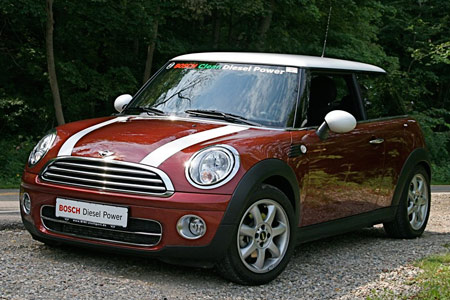
Photos Copyright ©2008 Sam Abuelsamid / Weblogs, Inc.
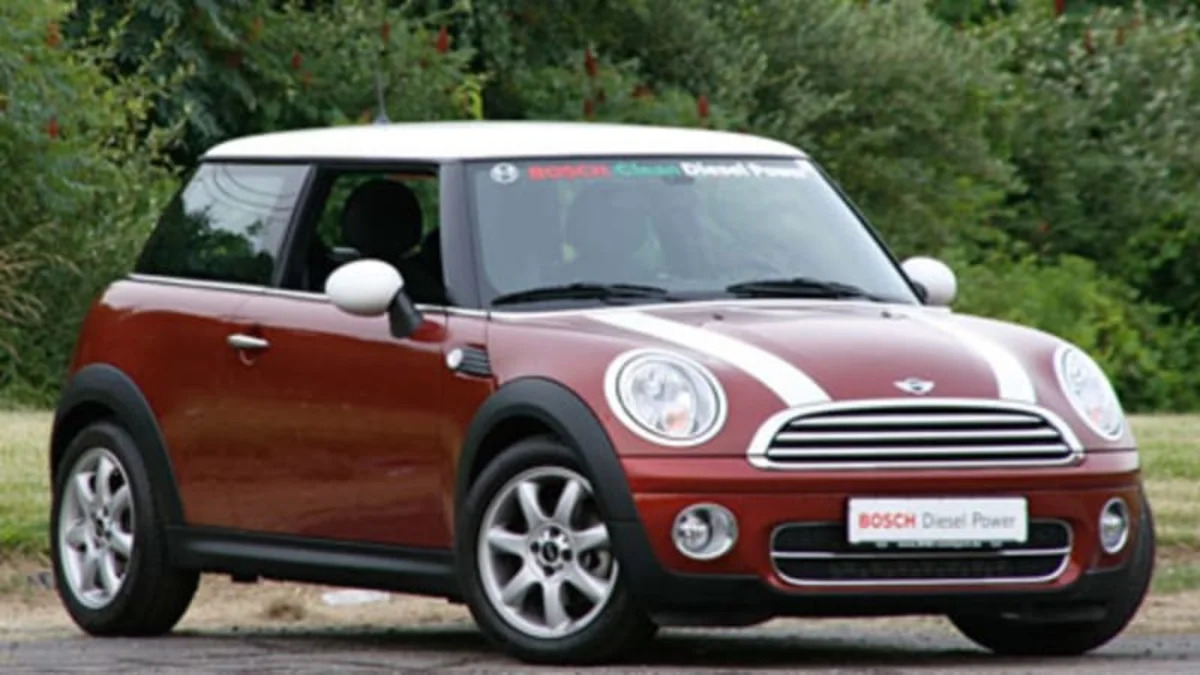
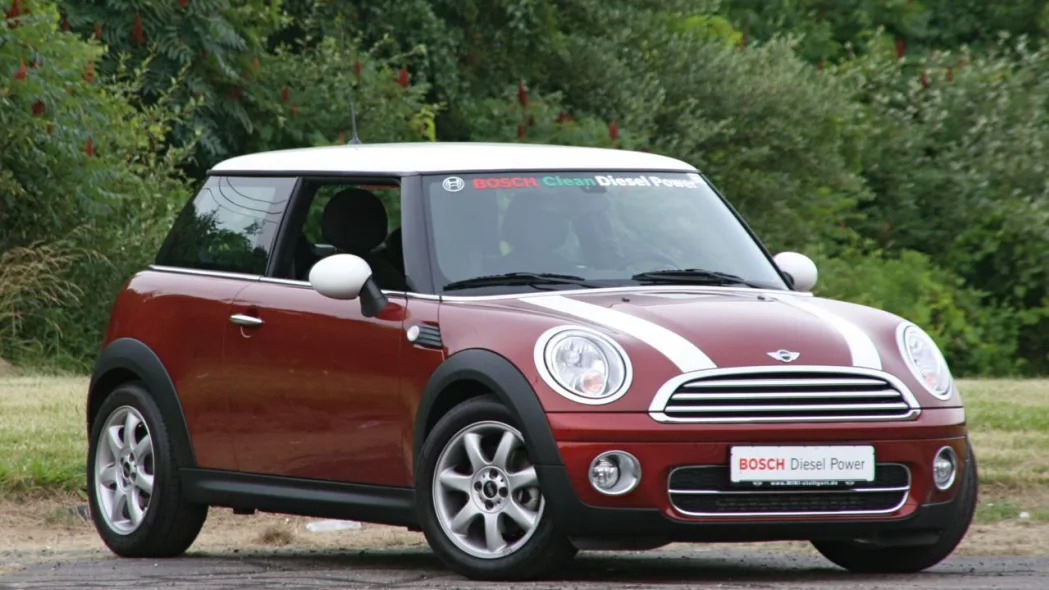

Sign in to post
Please sign in to leave a comment.
Continue